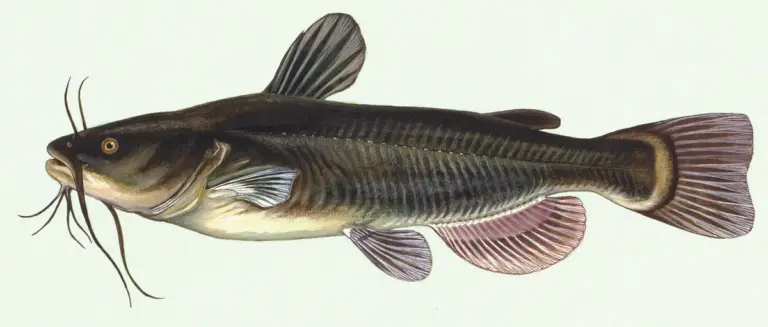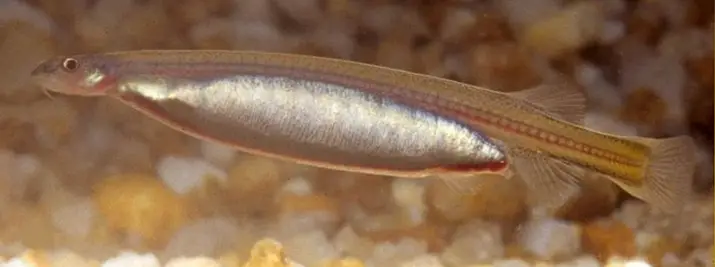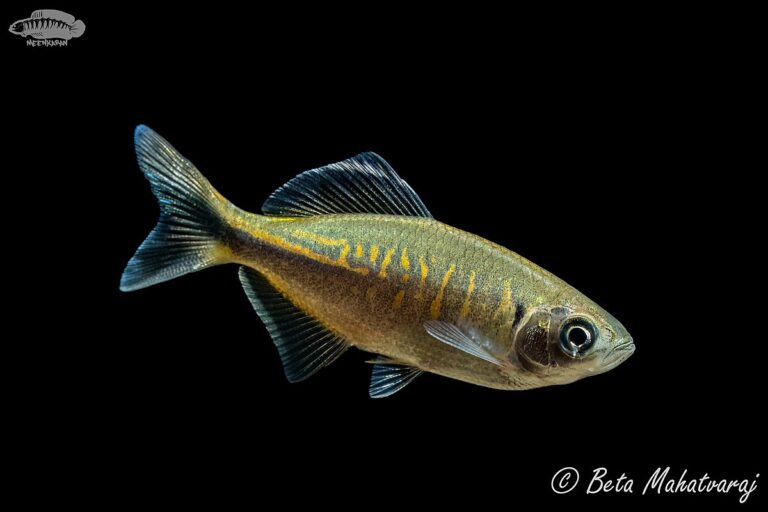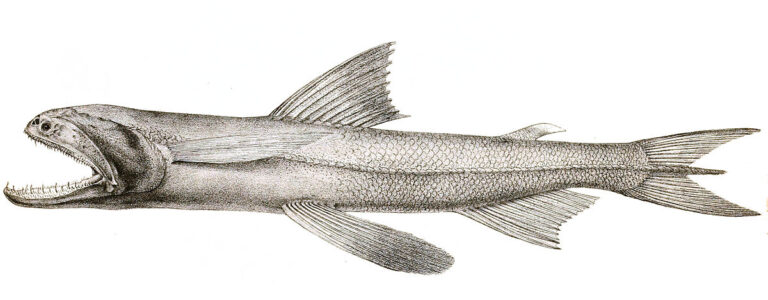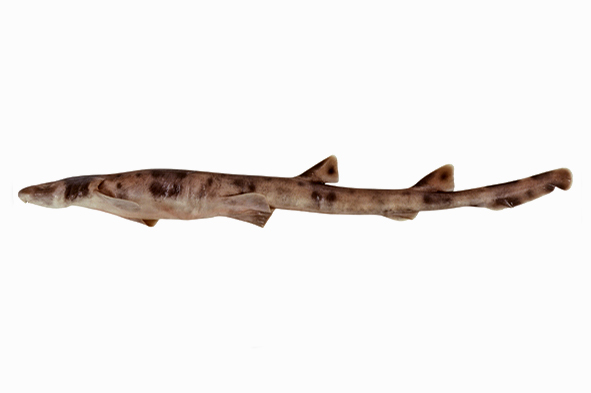Shark
“No shark species has any bones in their bodies.”
Shark Scientific Classification
- Kingdom: Animalia
- Phylum: Chordata
- Class: Chondrichthyes
Shark Conservation Status
- Status: Endangered
Shark Locations
- Habitat: Ocean
Shark Facts
- Prey: Sea lions, seals, humans, small fishes, and invertebrates
- Fun Fact: No shark species has any bones in their bodies
- Biggest Threat: Killer whales, sperm whales, and humans
- Gestation Period: Two years
- Diet: Carnivore
- Favorite Food: Sea lions, seals, humans, small fishes, and invertebrates
- Type: Fish
- Common Name: Shark
- Location: USA and Australian waters mostly
Shark Physical Characteristics
- Color: Grey, yellow, black, white, cream
- Skin Type: Rough
- Lifespan: 20-30 years
- Weight: 1500 to 4000 pounds
- Length: 5.8 to 7 feet
Incredible Shark Facts!
- Boneless Creatures: Sharks are fish that do not have any bones at all. Instead, their body is primarily made of cartilage, which is the same material that the human nose and ears are made from.
- Good Eyesight: Sharks have pretty good eyesight, allowing them to see clearly in dim-lighted areas.
- Sandpaper Texture: The skin of sharks often feels like sandpaper due to small, teeth-like structures called dermal denticles.
- Immobility Trance: Sharks can become immobile when flipped upside down, a state known as tonic immobility.
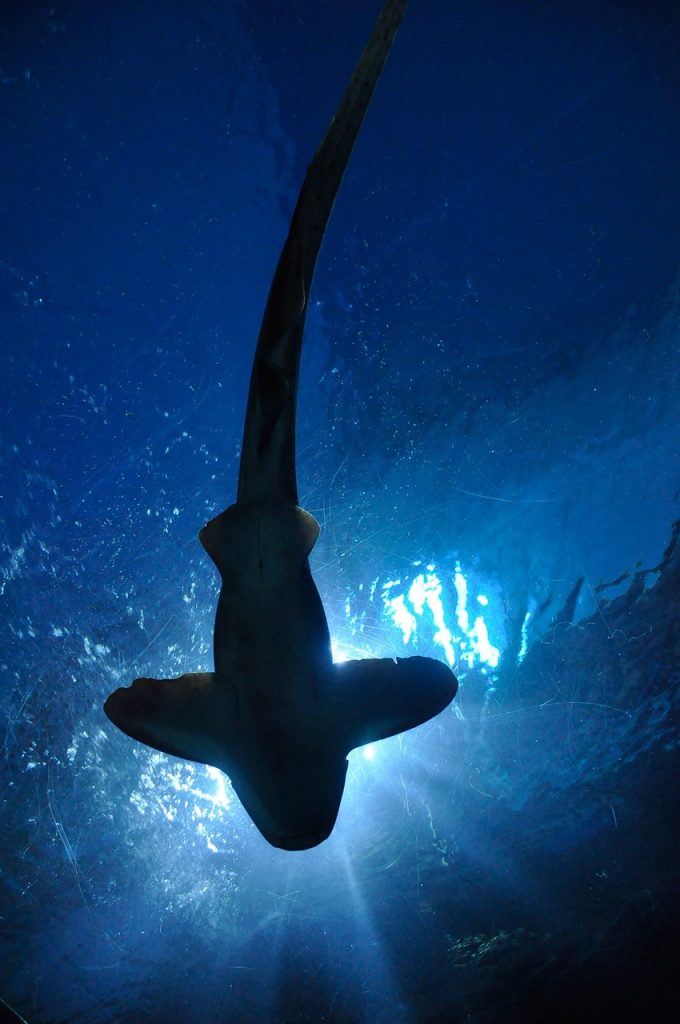
- Ancient Fishes: Sharks are ancient fish, believed to have been around for more than 450 million years.
- Land Sharks: The epaulette shark has evolved the ability to walk on land over small distances.
- Sixth Sense: Sharks are thought to have a sixth sense, detecting electrical fields produced by other animals, which helps them locate prey.
Evolution and Origins
Sharks are among the most ancient groups of fish on Earth, with a rich history dating back over 400 million years. They belong to the class Chondrichthyes, which also includes stingrays and chimeras. These animals are characterized by their cartilaginous skeletons, five to seven gills, and the absence of a swim bladder.
The earliest known sharks appeared in the oceans during the Silurian period, around 420 million years ago. These early sharks were small, with dorsal fins covered in sharp scales.
Over millions of years, sharks have evolved into diverse and complex creatures, varying in body shapes and diets. Notable evolutionary developments include species like the great white shark and the mako shark.
Classification and Scientific Name
Sharks are scientifically known as Selachimorpha, belonging to the kingdom Animalia and the phylum Chordata. They are classified under the class Chondrichthyes.
The name Selachimorpha is derived from Ancient Greek words – “sélakhos” (meaning “cartilaginous fish”) and the suffix “-morpha.” The root word “sélas” translates to “light” or “glow,” likely referencing the phosphorescent light some sharks emit.
Within the Selachimorpha superorder, there are eight living orders:
- Squatiniformes
- Pristiophoriformes
- Squaliformes
- Carcharhiniformes
- Lamniformes
- Orectolobiformes
- Heterodontiformes
- Hexanchiformes
Although four orders of these fish have gone extinct, there are still over 470 different shark species alive today.
Different Species
Shark Facts
With over 500 living species of sharks, the scientific name for this superorder is Selachimorpha. Despite four orders going extinct, sharks continue to display a remarkable variety. Differences among species include the presence or absence of an anal fin, mouth positioning, and snout length.
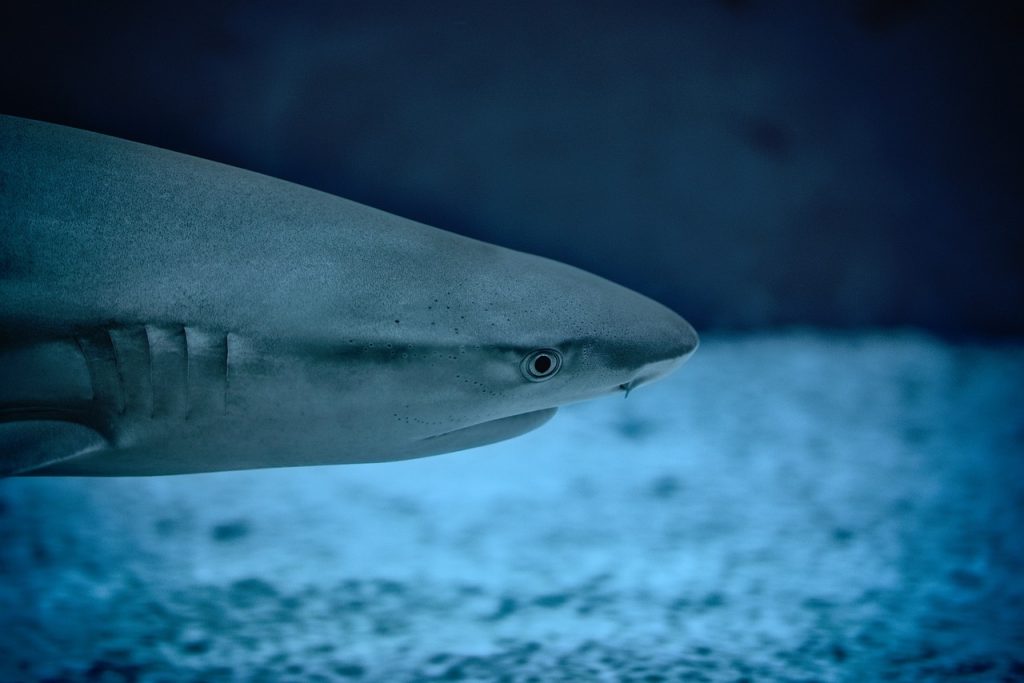
Notable Shark Species
- Great White Shark: Known for being the largest species, reaching up to 20 feet in length and living up to 30 years. They are often found in coastal waters.
- Cookiecutter Shark: Named for the cookie-shaped bite marks it leaves on its prey. It has the largest teeth relative to its body size and continuously grows new ones throughout its life.
- Ragged Tooth Shark: This shark gulps air to stay buoyant, much like a mammal, and loses up to three teeth daily. Despite its fierce appearance, it is generally harmless to humans.
- Bull Shark: Known for its ability to live in freshwater, it often inhabits shallow waters. Specialized glands help maintain the salt balance in its body.
- Tiger Shark: Recognizable by its vertical stripes, this shark can grow up to 18 feet long and lives in both shallow and deep waters. Its powerful jaws can crush sea turtle shells.
- Salmon Shark: Dangerous to humans, this shark lives in the northern Pacific Ocean and can regulate its stomach temperature. It is one of the fastest sharks, measuring about 6.5 feet at its shortest.
- Nurse Shark: Generally non-threatening to humans, nurse sharks are often unnoticed by swimmers.
- Horn Shark: Moves along the sea floor using its strong fins and spends most of its life in crevices or dark waters due to its sensitivity to light.
- Goblin Shark: Known as a living fossil, it has a distinctive long snout and protruding jaws. Found in deep-sea environments, much about this shark remains unknown.
- Greenland Shark: Holds the record for the longest lifespan among vertebrates, potentially living up to 500 years. Its slow lifestyle likely contributes to its longevity.
- Grey Reef Shark: A common predator in coral reef habitats throughout the Indo-Pacific region, known for preferring shallow waters.
- Basking Shark: Swims with its mouth open wide, often intimidating to divers.
- Hammerhead Shark: Recognizable by its rectangular head, this shark swims at an angle to reduce drag and increase efficiency.
- Frilled Shark: Named for the six rows of gills resembling ruffled collars.
Other Shark Species
- Blacktip Reef Shark
- Sand Tiger Shark
- Blue Shark
- Silky Shark
- Oceanic Whitetip Shark
- Great Hammerhead
- Blacktip Shark
- Shortfin Mako Shark
- Caribbean Reef Shark
- Grey Reef Shark
- Lemon Shark
- Whale Shark
- Bluntnose Sixgill Shark
- Dusky Shark
- Smooth Hammerhead
- Spinner Shark
- Galapagos Shark
- Copper Shark
- Leopard Shark
- Pyjama Shark
- Kitefin Shark
- Blacknose Shark
- Porbeagle
- Scalloped Hammerhead
- Spiny Dogfish
- Greenland Shark
- Goblin Shark
- Megamouth Shark
- Small-Spotted Catshark
- Brown Shy Shark
- Port Jackson Shark
- Silvertip Shark
- Sicklefin Lemon Shark
- Common Thresher
- Zebra Shark
- Whitetip Reef Shark
- Horn Shark
- Longfin Mako Shark
- Bonnethead
- Sand Devil
- Bigeye Thresher
- Salmon Shark
- Epaulette Shark
- Squatina Squatina
- Sandbar Shark
Sharks have lived for over 450 million years, evolving into a vast array of species with unique adaptations. To learn more about extinct shark species, check out resources on “11 Types of Sharks that Went Extinct.”
Appearance
Shark Physical Characteristics
Sharks have a cylindrical shape with tapered edges, enabling them to glide smoothly through deep waters in search of prey. The length and shape of their bodies and snouts can vary significantly among species.
- Size: Sharks are typically 5.8 to 7 meters (19 to 23 feet) long, about three times the height of an average human. The smallest species are less than 20 centimeters (8 inches) long, while the largest, like the whale shark, can reach about 12 meters (39 feet).
- Weight: Sharks generally weigh between 1500 to 4000 pounds, though some can weigh as much as 5500 pounds. They continue to grow throughout their lives, so the largest sharks are often very old.
- Coloration: Sharks are naturally colored for camouflage, which helps them blend into their surroundings and catch prey more effectively. The dorsal side (back) of their body is darker than the ventral side (belly). This countershading helps them blend with the dark ocean depths when viewed from above and with the lighter surface when viewed from below.
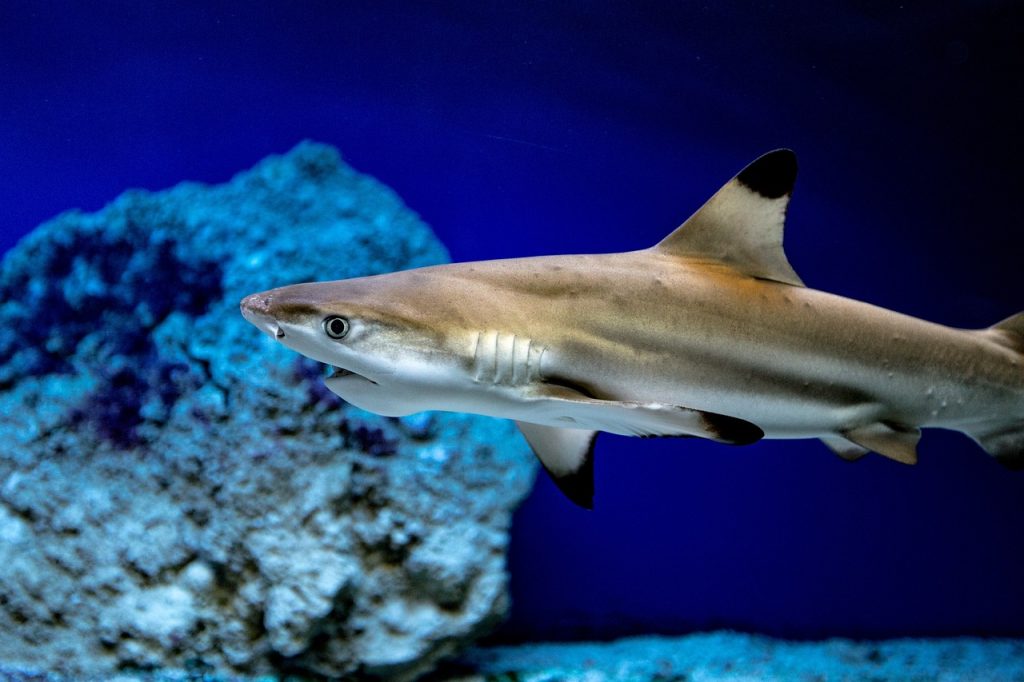
Distribution, Population, and Habitat
Shark Habitats and Distribution
Sharks, along with their sister group, rays, have adapted to a wide range of habitats over millions of years. They can be found in various environments:
- Shallow and Coastal Regions: Some sharks prefer shallow waters and coastal areas.
- Deep Waters: Others thrive in the depths of the ocean.
- Open Oceans and Ocean Floors: Many species are found in open oceans or along the ocean floor.
Geographic Distribution
- USA and Australia: Sharks are most commonly found in the waters around the USA and Australia, particularly New South Wales in Australia.
- Freshwater Species: A few species, such as the bull shark and the river shark, inhabit freshwater areas.
- Other Locations: Sharks can also be found in the Indian Ocean, near Brazil, and as close as North Carolina.
Species and Families
- Species Count: There are over 400 living species of sharks worldwide.
- Families: These species are divided into 14 to 30 different shark families, reflecting their vast diversity and adaptability.
Sharks’ ability to adapt to various habitats and their widespread distribution underline their evolutionary success and ecological importance.
Predators and Prey
Shark Predators
Despite their size, sharks are not without natural predators. Common predators include:
- Killer Whales (Orcas): These apex predators are known to hunt and eat smaller shark species.
- Sperm Whales: These large whales also consume sharks as part of their diet.
Shark Diet
Great White Shark Diet:
- Main Prey: Sea lions, sea turtles, dolphins, and seals.
- Carnivorous Nature: Sharks are carnivores and will eat other animals for nourishment. They often consume:
- Dolphins
- Seals
- Turtles
- Seagulls
- Other fish and sea mammals
General Diet:
- Relatives as Prey: Larger sharks will consume smaller sharks, including different species.
- Balanced Diet: Most sharks enjoy a diet that includes a variety of sea creatures, ensuring they get enough fat and protein.
Predators of Sharks
- Other Sharks: Larger sharks will prey on smaller sharks, including different species.
- Orcas and Sperm Whales: These whales are apex predators and will hunt sharks for their high fat and protein content. Even the largest sharks cannot hunt them.
Sharks play a crucial role in the ocean’s ecosystem, both as predators and prey, contributing to the balance of marine life.
Reproduction and Lifespan
Sharks have a unique reproductive process compared to other fish, utilizing internal fertilization similar to mammals. Here’s how their reproduction works:
- Reproductive Organs: Male sharks have two claspers, which are extensions of the pelvic fins used for mating.
- Mating Process: During mating, the male inserts one clasper into the female’s cloaca, transferring sperm for fertilization.
- Gestation Period: Shark gestation periods vary by species:
- Some sharks have a relatively short gestation period of about 5 months.
- Others, however, can have an exceptionally long pregnancy lasting up to three years.
- Lifespan: Sharks typically live for about 20 to 30 years, although lifespan can vary among species.
Sharks’ reproductive adaptations and longevity contribute to their resilience and success in diverse marine environments.
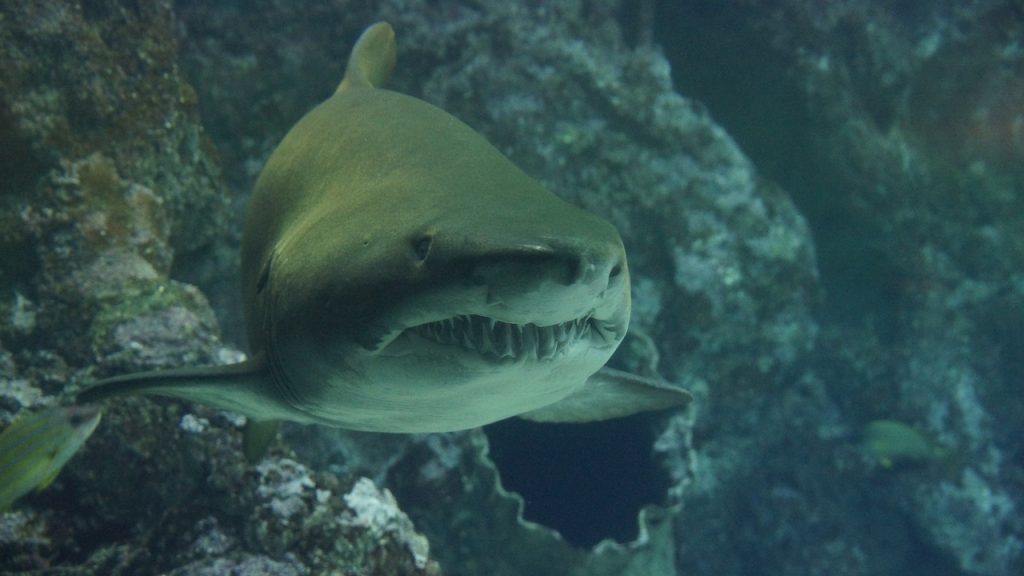
Fishing and Cooking
Sharks are extensively targeted for commercial fishing, primarily for their meat, which is highly prized, especially in the United States. Their large body size makes them a substantial meat source for human consumption.
One popular culinary preparation of sharks is shark steaks. These steaks are seasoned with a variety of spices and then cooked in oil to create a flavorful dish enjoyed by many people. Shark meat is appreciated for its texture and taste, contributing to its popularity in cuisines around the world. However, due to concerns about overfishing and the conservation status of many shark species, sustainable fishing practices are increasingly advocated to protect these valuable marine creatures.
Final Words…
Sharks are ancient and diverse creatures that play vital roles in marine ecosystems. With over 500 species exhibiting a wide range of adaptations and behaviors, sharks are apex predators crucial for maintaining balanced oceanic food webs. Despite their formidable reputation, sharks face significant threats from overfishing and habitat loss, underscoring the importance of sustainable conservation efforts to ensure their survival and the health of our oceans.
